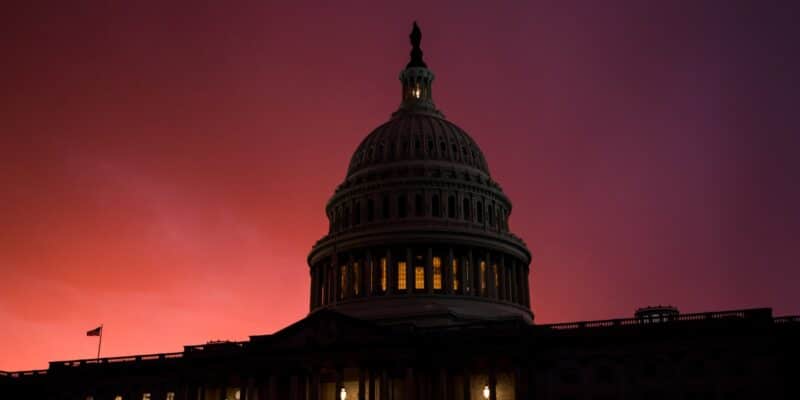
Recovering the Wisdom of Federalist 51
February 06, 2023
Two-hundred-and-thirty-five years ago on February 6, 1788, James Madison (writing as “Publius”) published perhaps the most famous of the Federalist papers: 51. These papers are essays defending the proposed constitution, which still stands as our governing document and a masterpiece of political structure. Federalist 51 remains an important summary of the principles that inform the U.S. Constitution – principles we’ve forgotten.
For one, Federalist 51 posited a purpose for our lives together. Madison wrote, “Justice is the end of government. It is the end of civil society.” We form political communities and structures to protect and exercise inherent rights. Both individually and collectively, this goal of justice orders our pursuits.
For another, this paper notes the foundational problem with humanity’s pursuit of justice: humanity itself. Madison writes of government as “the greatest of all reflections on human nature.” Government must exist because, as the paper famously diagnoses, men are not “angels.” Instead, humanity is fallen and sinful by nature. Human selfishness leads to oppression wherein persons suffer infringement of their individual rights – a violation of justice.
But here we run into the problem central to Federalist 51 – and the Federalist in general. We establish rule over human beings to limit the harm that man can enact against man. Doing so involves, however, rule by human beings exercising governmental powers. As one recognizes that the men ruled aren’t angels, one must also recognize that the ones ruling aren’t either. This requires a government that is limited.
Political power must walk a tightrope: “In framing a government which is to be administered by men over men, the great difficulty lies in this: you must first enable the government to control the governed; and in the next place oblige it to control itself.” Historically, governments have tended to swing violently between anarchy (where the government lacks control) and tyranny (where individuals lack liberty). Truly good government must exist between these extremes, having a framework of ordered liberty that protects justice.
Federalist 51 displays and defends the Constitution as seeking to walk the narrow path of good government. It starts with human equality as realized in the consent of the governed. “A dependence on the people is, no doubt, the primary control on the government,” we are told. Madison adds, however, that this isn’t enough: “Experience has taught mankind the necessity of auxiliary precautions.”
Some of the precautions are structural. First, the Constitution divides governmental functions between three distinct institutions. As Madison explains, the Constitution gives each branch adequate powers to do its job and stop encroachments from other branches. Our governing document brilliantly recognizes that the branches are not inherently equal, thus “it is not possible to give to each department an equal power of self-defense.” The inequality stems from our “republican government,” in which “the legislative authority necessarily predominates.” Since we operate under the rule of law, the lawmaking power has a natural edge. And since we have rule by the people, their representatives in Congress look more like the people as a whole ruling than the one president or many lifetime, robed judges.
So the Constitution seeks to limit that naturally dominant power of the legislative branch, including dividing its power between two chambers and giving the executive the veto, in order to achieve greater balance between Congress and the other institutions. No one branch gets complete dominance and thus the capacity to act tyrannically. Separation of powers also seeks to harness human selfishness, realized here as political ambition, by having different politicians’ ambitions check each other. Congressmen will guard the powers of their legislative body to enhance their own personal power, as will the executive and the judges in their spheres. Thus, as ambition counteracts ambition, “The interest of the man must be connected with the constitutional rights of the place.”
Second, the Constitution divides power between the federal and state governments and allows them to check one another. We call this “federalism.” Between this and the separation of powers, “a double security arises to the rights of the people. The different governments will control each other, at the same time that each will be controlled by itself.”
Finally, Federalist 51 shows how the Constitution restrains the people in addition to limiting the government, recognizing that majorities can oppress just as much as a small group of elites. Building off Federalist 10, Madison says America’s large population will force people with different views and interests to work together to achieve a majority. In forming such coalitions, they will be forced to moderate sectarian and extreme views, converging on more reasonable principles based on natural rights and grounded in the ultimate goal of justice. The majority of the people will rule. But the process set up to exercise that rule will make them act more prudently, reasonably, and for the good.
“We, the People” would do well to recapture the wisdom found in Federalist 51. Without a proper view of justice, we lose our compass. Without a right diagnosis of human nature, we risk being deceived. And without understanding the separation of powers, federalism, and the purpose of political coalitions, we risk failure even in our most noble endeavors. We need not fail. We need only look to this gem of political wisdom that shines as bright today as it did 235 years ago.
Adam M. Carrington is an associate professor of politics at Hillsdale College.
This article was originally published by RealClearPublicAffairs and made available via RealClearWire.



